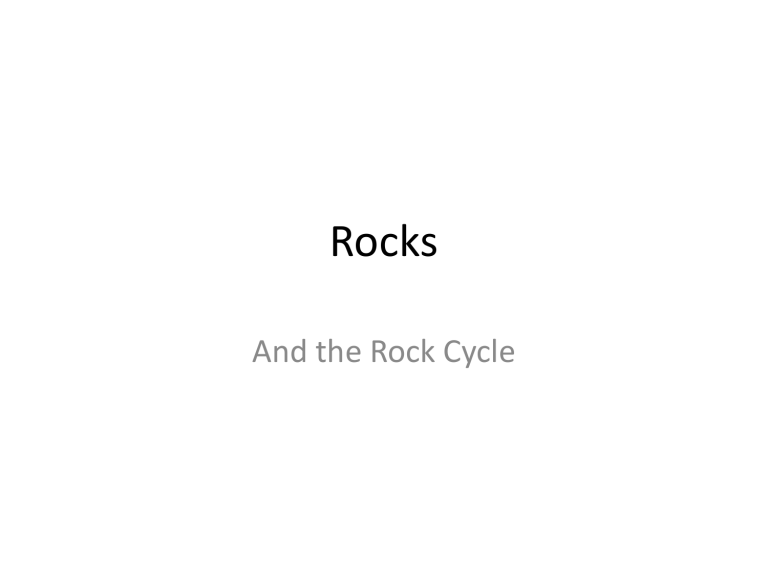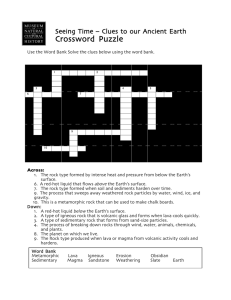Rocks - bethwallace

Rocks
And the Rock Cycle
• Rocks are made up of a variety of minerals and can be classified into three main categories:
– Igneous
– Sedimentary
– Metamorphic
Igneous “Born of Fire”
• Formed from the cooling and solidifying of magma
• Can be either intrusive or extrusive
– Intrusive: form below the earth’s surface, crystals in the rock are usually larger because they cool more slowly
– Extrusive: form on the earth’s surface as a result of volcanic activity, crystals are usually smaller because lava cools very quickly
• Some common examples of igneous rocks include –granite, basalt, pumice
Sedimentary “Born of sediment and life”
• Sedimentary rock can be classified in two ways:
– Clastic: formed from the “gluing” together of sediments over time
– Non-Clastic: formed from remains of plants and animals
• Sedimentary rocks typically form in layers and can easily break
• Some common examples of sedimentary rock include-sandstone, shale, limestone
Metamorphic Rock “Born of heat and pressure”
• Form when pre-existing rock is transformed under tremendous heat and pressure
• This occurs when layers or rock below the earth’s surface experience heat and pressure due to the overlying material
• This takes millions of years to occur
• Some common examples of metamorphic rock include-gneiss, slate, marble
The Rock Cycle
• How rocks are formed
• 1. start with molten rock known as magma
• 2. when it cools, this melted rock hardens and turns into igneous rock
– This rock is weathered (broken up), eroded (worn away), and deposited (collected)
3. The deposits layer and harden, forming sedimentary rock
• 4. if igneous or sedimentary rock under goes pressure or heating, it becomes metamorphic rock
Heated and melts
4. Metamorphic rock
Heat and/or pressure
1. Magma
(molten rock)
3. Sedimentary rock
Cools and hardens
2. Igneous rock
Weathering, erosion, deposition






